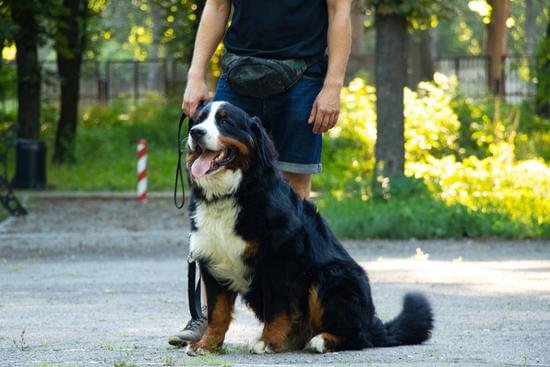How do you crate train an older dog at night? Crate training can be a valuable tool for teaching your older dog to feel secure and comfortable during the nighttime hours. In this article, we will explore the importance of crate training for older dogs and provide a step-by-step guide to help you successfully crate train your furry friend.
Crate training is not only beneficial for puppies, but it can also be highly effective for older dogs who may have developed undesirable behaviors or struggle with anxiety at night. By creating a safe and cozy space for your dog, you can help them feel secure and reduce any potential destructive tendencies or nighttime accidents.
Assessing your dog’s readiness is the first step in crate training. We will delve into the factors that indicate whether your older dog is ready for crate training at night, such as their overall behavior, temperament, and previous experiences with crates.
In the following sections, we will discuss how to choose the right size and type of crate for your older dog, as well as tips on making it comfortable and welcoming. We will then guide you through the process of introducing positive associations with the crate, establishing a consistent nighttime routine, and gradually increasing crating periods.
Lastly, we will address common challenges such as anxiety or distress during crate training and provide tips for easing your older dog’s anxiety. Consistency and patience are key throughout this process.
By understanding the importance of crate training an older dog at night and following our step-by-step guide, you can create a peaceful nighttime routine that benefits both you and your furry companion. So let’s dive into this journey together.
Assessing your Dog’s Readiness
Before embarking on crate training an older dog at night, it is important to assess whether or not your dog is ready for this type of training. While crate training can be beneficial for dogs of all ages, it may not be suitable for every dog. Assessing your dog’s readiness will help determine if crate training at night is the right approach for your older dog.
One important factor to consider when assessing your dog’s readiness is their behavior and temperament. If your older dog has shown signs of anxiety or distress when confined in smaller spaces in the past, crate training at night may not be the best choice. Some dogs may find being in a crate stressful or uncomfortable, which can lead to negative associations with both the crate and nighttime.
Additionally, it is crucial to consider any physical limitations or health conditions that may affect your older dog’s comfort in a crate at night. For example, if your dog has arthritis or joint issues, lying on hard surfaces for prolonged periods of time may cause discomfort or pain. In such cases, alternative sleeping arrangements should be considered instead of crate training.
To determine if your older dog is ready for crate training at night, observe their behavior and consult with a veterinarian if necessary. It may also be helpful to gradually introduce your dog to the concepts of being confined and spending time alone before diving into overnight crate training.
| Factors to Consider | Evaluation |
|---|---|
| Behavior and temperament | Observe any signs of stress, anxiety, or discomfort in small spaces |
| Physical limitations/health conditions | Consider any issues that may cause discomfort while crated at night |
| Gradual introduction to confinement | Assess how your dog responds to spending increasing amounts of time in a confined space |
By carefully assessing your older dog’s readiness for crate training at night, you can ensure that their well-being and comfort are prioritized. Remember, every dog is unique, and what works for one may not work for another. It is important to be patient and flexible in finding the best approach for crate training your older dog at night.
Choosing the Right Crate
When crate training an older dog at night, it is crucial to choose the right crate that provides comfort and security for your furry friend. The size and type of crate you choose will greatly affect your dog’s overall experience with crate training. Here are some factors to consider when finding the perfect crate for your older dog:
Size
The size of the crate plays a significant role in ensuring your older dog’s comfort and safety during crate training at night. It should be big enough for your dog to stand up, turn around, and lie down comfortably. However, it shouldn’t be too large either because dogs generally prefer cozy spaces that mimic their instinctual den-like environment.
Type of Crate
There are different types of crates available, including wire mesh crates, plastic crates, and soft-sided crates. Each type has its advantages and disadvantages, so consider your dog’s needs and preferences when making a choice. Wire mesh crates provide excellent airflow and visibility but may not provide the cozy feel some dogs desire.
Plastic crates offer more privacy and security but can restrict airflow and visibility. Soft-sided crates are lightweight and portable but may not be suitable for dogs who tend to chew or scratch.
Accessibility
Consider how easy it is for your older dog to enter and exit the crate. Some crates have doors on one end only, while others have doors on multiple sides. If your older dog has mobility issues or limited flexibility, choosing a crate with doors on the longer side allows for easier access.
Safety Features
Ensure that the chosen crate has secure latches or locks to prevent accidental escape by your older dog at night. Additionally, check for any sharp edges or protruding parts inside the crate that could potentially harm your furry companion during nighttime confinement.
Remember, every dog is unique, so take your older dog’s individual needs and personality into account when selecting a crate. By choosing the right crate, you will create a welcoming and secure environment for your older dog during crate training at night.
Preparing the Crate
Making the crate a comfortable and welcoming space for your older dog at night is crucial for successful crate training. Creating a positive environment in the crate can help alleviate any anxiety or resistance that your dog may have towards being confined. Here are some key steps to follow in preparing the crate for your older dog:
- Select the right bedding: Choosing suitable bedding for your older dog’s crate is essential for their comfort and well-being. Opt for soft, cozy materials that will provide insulation and cushioning. Avoid using thick blankets or pillows that may pose a suffocation hazard. Washable bedding is recommended to maintain cleanliness and freshness.
- Add familiar scents: Introducing familiar scents inside the crate can make it more inviting and comforting for your older dog. Place an item with the scent of their favorite toy, blanket, or even an unwashed piece of clothing that carries your scent inside the crate. These familiar smells can help them feel secure and reduce anxiety.
- 3.Provide appropriate chew toys: Older dogs may experience discomfort from teething or arthritis, so it’s important to provide appropriate chew toys in their crate to keep them occupied and mentally stimulated. Choose toys specifically designed for senior dogs, such as ones made from softer materials or those with dental benefits.
- 4.Ensure proper ventilation: Proper air circulation within the crate is vital to prevent overheating and ensure your dog’s comfort. Make sure that there are sufficient openings on all sides of the crates to allow fresh air to flow through. However, ensure that the openings are not too large to prevent accidental escape.
- 5.Create a calm environment: Placing the crate in a quiet area away from noise, distractions, and excessive foot traffic can help create a peaceful atmosphere conducive to restful sleep during the night. Make sure there are no bright lights directly shining into the crate that could disrupt your older dog’s sleep.
By implementing these preparations, you can transform the crate into a comfortable and welcoming space for your older dog at night. Remember, a positive environment will not only make the crate training process smoother but also strengthen the bond between you and your furry friend.
Familiarizing your Dog with the Crate
Once you have chosen the right crate for your older dog, the next step in crate training at night is to familiarize them with their new space. This involves creating positive associations and providing encouragement to help your dog feel comfortable and relaxed in the crate.
Introduce the Crate Slowly
It’s important not to force your older dog into the crate or make it an overwhelming experience. Instead, introduce the crate gradually and let them explore it at their own pace. Start by placing some treats or toys near the entrance of the crate to pique their interest. Allow them to approach and sniff the crate without any pressure.
Gradually move the treats or toys closer to the back of the crate, encouraging your dog to step inside. If they do so willingly, praise and reward them with a treat. Repeat this process several times a day until your dog feels comfortable entering and staying in the crate for short periods.
Create Positive Associations
To help your older dog form positive associations with the crate, associate it with enjoyable experiences. Place their favorite blanket or bedding inside along with some familiar-smelling items like a t-shirt you’ve worn recently. This will help create a sense of security and familiarity.
You can also feed your dog their meals near or inside the crate. Gradually move their food bowl closer to the entrance of the crate each day until eventually they are comfortably eating their meals inside. This will reinforce positive associations between mealtime and being in the crate.
Encourage Relaxation
When introducing your older dog to spending longer periods of time in the crate, it’s important to encourage relaxation while they are inside. Provide comforting items such as a chew toy or interactive puzzle toy filled with delicious treats that can keep them occupied during quiet moments.
Additionally, consider playing some calming music or leaving a piece of clothing with your scent nearby. These elements can help create a soothing and inviting atmosphere for your dog. Avoid using the crate as punishment, as this will only create negative associations and hinder the crate training process.
By familiarizing your older dog with the crate in a positive and encouraging manner, you are setting them up for success in their crate training journey at night. Remember to be patient and persistent, as crate training can take time and each dog is unique in their progression. The next step is to establish a consistent nighttime routine for your older dog in order to reinforce their understanding of the crate as a safe and comfortable space.
Establishing a Nighttime Routine
Setting a consistent nighttime routine is crucial when crate training an older dog. Dogs are creatures of habit and thrive on routine, so creating a structured schedule will help your dog adjust to their new sleeping arrangements. Here are some steps you can take to establish a nighttime routine for crate training your older dog:
- Determine the ideal bedtime: Start by assessing your dog’s individual needs. Consider their age, breed, and any medical conditions that may affect their sleep patterns. Most dogs need between 12-14 hours of sleep per day, so choose a time that allows for this.
- Stick to a regular feeding schedule: It’s important to establish specific mealtimes for your dog that align with their bedtime routine. Avoid feeding them too close to bedtime to prevent accidents or discomfort during the night.
- Take your dog out for bathroom breaks before bedtime: Before placing your dog in the crate for the night, make sure they have had an opportunity to relieve themselves outside. This will help prevent accidents in the crate and reinforce good bathroom habits.
- Provide mental and physical stimulation: Make sure your dog has had plenty of exercise and mental stimulation throughout the day before settling them down for the night. A tired dog is more likely to settle down quickly and sleep soundly in their crate.
Once you have established a consistent routine, it’s important to stick to it as much as possible. Dogs thrive on predictability and will feel more secure knowing what is expected of them each night.
| Step | Description |
|---|---|
| Determine the Ideal Bedtime | Assess your dog’s individual needs and choose a time that allows for 12-14 hours of sleep. |
| Stick to a Regular Feeding Schedule | Establish specific mealtimes that align with your dog’s bedtime routine. |
| Take Your Dog out for Bathroom Breaks | Ensure they have had an opportunity to relieve themselves before placing them in the crate for the night. |
| Provide Mental and Physical Stimulation | Exercise and engage your dog’s mind throughout the day to help them settle down at night. |
Gradual Graduation
Once you have successfully introduced your older dog to the crate and they are comfortable spending time inside, it’s time to gradually increase the duration of crating periods at night. This step-by-step approach is crucial in ensuring that your dog feels safe and secure in their crate throughout the night.
Start by crating your older dog for short periods during the day when they are calm and relaxed. Encourage them to enter the crate willingly with treats or toys, and praise them for going inside. Gradually increase the duration of these daytime crating sessions, starting with just a few minutes and gradually working up to longer periods. This will help your older dog become accustomed to spending extended time in the crate without becoming anxious or restless.
As your older dog becomes more comfortable with longer crating periods during the day, you can begin implementing these extended durations at night. Start by placing your dog in their crate for bedtime as usual, but leave the door open initially.
This allows them to come out if they need to use the bathroom or find comfort elsewhere in their sleeping area. Over time, once they are consistently staying calm and settled throughout the night with the door open, you can begin closing the door for short intervals.
It’s essential to closely observe your older dog’s behavior during this process. If they show signs of anxiety or distress when confined for longer periods, back up a step and go at a slower pace. Remember that every dog is different and may require different timelines for adjustment. Patience is key as you work towards gradually increasing the crating periods at night, always prioritizing your dog’s emotional well-being.
By following this gradual graduation approach, you are setting a solid foundation for long-term success in crate training an older dog at night. It allows them to slowly adjust to being confined for extended durations while ensuring their comfort and security. With consistency, patience, and a positive attitude, you can help your older dog become more relaxed and content in their crate during the nighttime hours.
Addressing Anxiety and Distress
Crate training can sometimes be a stressful experience for older dogs, especially if they have never been introduced to a crate before. It is not uncommon for them to experience anxiety and distress during this process. However, with the right approach and some helpful tips, you can ease your older dog’s anxiety and make the crate training experience a positive one.
One of the first things you can do to address your dog’s anxiety is to gradually introduce them to the crate. Start by leaving the crate door open and placing treats or their favorite toy inside. Let them explore the crate at their own pace and reward them with praise and treats when they show interest in going inside. This will help create positive associations with the crate.
Another tip is to gradually increase the time your dog spends in the crate. Begin by having short sessions where they are secured in the crate with the door closed for just a few minutes at a time. Slowly increase the duration over several days or weeks, always making sure to reward them for calm behavior when they are in the crate.
Creating a comfortable environment within the crate can also help alleviate anxiety. Use soft bedding and place familiar items, such as a blanket or t-shirt with your scent, inside. These familiar scents will provide comfort and reassurance to your older dog while they adjust to being in the crate at night.
In addition to these tips, it is important to remain patient and consistent throughout the process. Reassure your older dog by speaking softly and using soothing tones when they are in or around the crate. Consistency will help build trust between you and your dog, making it easier for them to relax during nighttime crating.
Remember that every dog is different, so it may take some trial and error to find what works best for easing their anxiety during crate training at night. By addressing their anxiety with compassion and patience, you can create a positive association with their crate that will ultimately lead to a peaceful and restful night’s sleep for both you and your older dog.
Consistency and Patience
Crate training an older dog at night can be a challenging process, but consistency and patience are key factors in achieving success. It is important to remember that every dog is different and will require varying amounts of time to adjust to crate training. By maintaining consistency and exhibiting patience throughout the process, you can help your older dog feel more comfortable and secure in their crate.
- Consistency: When it comes to crate training an older dog at night, consistency is crucial. This means establishing a routine and sticking to it. Set specific times for when your dog will be crated during the night, and be consistent with these times each day.
Additionally, create a consistent bedtime routine that includes crate training as part of the process. This could involve giving your dog a special treat or toy before they enter the crate, providing them with comforting words or gestures, and ensuring that they have access to water before bed. - Patience: Crate training an older dog at night may take longer than training a younger puppy, as they may have already developed certain habits or anxieties surrounding sleeping arrangements. It is important to approach crate training with patience and understanding.
If your older dog shows signs of anxiety or distress while in the crate, try not to rush the process or give up too quickly. Instead, allow your dog time to adjust gradually and provide reassurance when needed. - Positive reinforcement: Another key factor in successfully crate training an older dog at night is using positive reinforcement techniques. This involves praising and rewarding your dog whenever they exhibit desirable behavior around the crate or while inside it. You can give them treats, verbal praise, or even their favorite toy as a reward for good behavior during crate training sessions.
By maintaining consistency, exhibiting patience, and using positive reinforcement techniques, you can successfully crate train your older dog at night. Remember that each individual dog may require a different approach or timeline for successful crate training, so it’s important to be adaptable and attentive to your dog’s needs throughout the process. With time and patience, you will build a strong bond with your crate trained older dog at night.
Troubleshooting
Separation Anxiety
One common challenge that dog owners may encounter when crate training an older dog at night is separation anxiety. Older dogs may have a stronger attachment to their owners and may become anxious or distressed when left alone in a crate. This can manifest in behaviors such as barking, whining, or attempting to escape the crate.
To address separation anxiety during crate training, it is important to gradually acclimate your dog to being alone in the crate. Start by leaving your dog in the crate for short periods of time while you are still present in the room.
Slowly increase the duration of time that your dog spends alone in the crate, rewarding calm behavior with treats and praise. Additionally, providing toys or treats specifically for crate time can help distract and entertain your dog during this period.
If your older dog continues to experience severe separation anxiety despite these efforts, it may be helpful to consult with a professional dog trainer or veterinarian who can provide additional guidance and support.
Accidents in the Crate
Another challenge that may arise when crate training an older dog at night is accidents inside the crate. This can be frustrating for both you and your pet, but it is important not to scold or punish your dog as this will only make them associate the crate with negative experiences.
To prevent accidents, ensure that you are following a consistent schedule for taking your older dog outside to relieve themselves before bedtime. Additionally, choose a properly sized crate that allows enough space for your dog to stand up, turn around, and lie down comfortably. Dogs are less likely to eliminate where they sleep, so a correctly sized crate can help discourage accidents.
If accidents do occur inside the crate, thoroughly clean and sanitize it using an enzyme-based cleaner specifically designed for pet messes. This will help remove any lingering odors that might attract your dog to eliminate in the same spot again. Consider gradually increasing the amount of time your dog spends in the crate while actively supervising them so that you can promptly take them outside if they show signs of needing to eliminate.
Excessive Barking or Whining
Excessive barking or whining is another challenge that some dog owners may face when crate training an older dog at night. This behavior may indicate that your dog is uncomfortable or anxious about being in the crate.
To address excessive barking or whining, it is important to initially avoid reinforcing this behavior. While it may be difficult, do not give in to your dog’s demands by letting them out of the crate when they are barking or whining. Instead, wait for a moment of quiet and then reward your dog with praise and treats.
Additionally, try to create positive associations with the crate by providing stimulating toys or food puzzles inside the crate. This can help keep your older dog occupied and distracted from their anxiety.
If excessive barking or whining persists, consider seeking advice from a professional trainer who can provide personalized guidance for your specific situation.
Conclusion
In conclusion, crate training an older dog at night can be a challenging process, but with patience and consistency, it is possible to successfully create a strong bond with your furry friend. By following the steps outlined in this article, you can help your older dog adjust to crate training and develop positive associations with their crate.
Throughout the crate training process, it is essential to celebrate the progress your dog makes. Recognize their accomplishments and reward them for their efforts. Whether it’s staying in the crate for longer periods or remaining calm throughout the night, each small victory brings you closer to a well-trained dog.
Additionally, building a strong bond with your older dog is crucial during this training period. Spend quality time with them outside of the crate, engage in activities they enjoy, and provide plenty of love and affection. This will not only strengthen the bond between you and your pet but also make them feel more secure during crate training.
Lastly, remember that every dog is unique, and some may require more time and patience than others when it comes to crate training at night. Be adaptable in your approach and willing to make adjustments as needed. With perseverance and understanding, you will be able to successfully crate train your older dog at night and enjoy a peaceful sleep routine for both of you.
Frequently Asked Questions
Is it OK to crate a senior dog at night?
It can be okay to crate a senior dog at night, as long as it is done properly and with the dog’s well-being in mind. Some older dogs may feel more secure and comfortable in their crate, which can help them relax and sleep better at night.
However, it’s important to ensure that the crate is spacious enough for the dog to move comfortably and that it is not used as a form of punishment or confinement for extended periods of time. Additionally, it is crucial to consider any specific needs or health issues that the senior dog may have, such as arthritis or difficulty getting up or lying down, and make appropriate accommodations for their comfort.
How do I get my dog to settle in his crate at night?
Getting a dog to settle in his crate at night requires patience, consistency, and positive reinforcement. To begin with, create a comfortable and inviting space inside the crate by adding soft bedding, a familiar blanket or toy, and perhaps even a piece of clothing with your scent on it. Gradually acclimate your dog to the crate by leaving the door open during the day so they can explore it freely.
Encourage your dog to enter voluntarily by placing treats or toys inside but avoid forcing them into the crate. During bedtime routines, provide soothing activities such as gentle petting or reading aloud nearby while your dog is inside the crate. Using calming cues like “goodnight” or playing soft music may also help establish nighttime relaxation signals for them.
How long does it take to crate train an older dog?
The length of time it takes to crate train an older dog can vary depending on several factors including their previous experiences with crates and individual temperament. While some senior dogs may readily adjust within a few days or weeks, others may require more time and patience to develop positive associations with their crates. Consistency is key during training sessions—start gradually by introducing short periods of time in the crate while offering treats and praise for calm behavior inside.
Gradually increase the durations over time while ensuring your older dog feels comfortable throughout the process. Remember, older dogs may have different physical and emotional needs, so it is important to be attentive and adapt the training approach accordingly to make it a positive experience for them.

Welcome to the blog! I am a professional dog trainer and have been working with dogs for many years. In this blog, I will be discussing various topics related to dog training, including tips, tricks, and advice. I hope you find this information helpful and informative. Thanks for reading!





